In the world of dog training, finding the right tools to engage and educate your furry friend can make all the difference. While traditional methods have their merits, the advent of innovative dog training toys has revolutionized the way we teach our pets. These toys aren’t just for playtime; they’re designed to enhance your pet’s learning experience, strengthen the bond between you and your pup, and even transform their behavior for the better. Let’s delve into the world of dog training toys and discover how they can elevate your pet’s training journey.
Introducing the Ultimate Dog Training Toy: A Playful Solution to Pawsome Progress!
Ah, the joy of training your furry friend is as rewarding as it is challenging. That’s why we’re thrilled to introduce the ultimate dog training toy – a playful solution designed to make your pup’s learning journey both fun and effective. Imagine a world where your dog not only masters commands with ease but also looks forward to each training session. Our innovative toy is here to make that vision a reality!
Picture this: a vibrant, interactive toy that captures your dog’s attention like a beacon. It’s more than just a tool; it’s a game-changer in the realm of dog training. This toy is meticulously crafted with the latest in canine psychology, ensuring that your furry companion not only enjoys the play but also learns valuable skills along the way.
The design is a masterpiece of simplicity and sophistication. It’s durable, yet flexible enough to withstand the energetic tugs and slobbers of an excited dog. The colors are bold and engaging, making it impossible for your pup to ignore. It’s a toy that’s not just fun to play with, but also acts as a beacon of learning, guiding your dog through a series of interactive challenges.
One of the standout features of this ultimate dog training toy is its versatility. Whether you’re working on basic obedience commands or more advanced tricks, this toy can adapt to your dog’s evolving skill set. It’s like having a personal trainer for your pet, but one that’s always on call and never asks for a break!
Inside its sturdy frame lies a world of puzzles and games. The toy is filled with treats or kibble that your dog can work to retrieve, teaching them the value of patience and problem-solving. Each time they solve a puzzle, they get a reward, reinforcing the positive behavior and making the learning process feel like a treat itself.
But what truly sets this toy apart is its ability to engage your dog’s senses. The texture is designed to stimulate their natural instincts, while the sounds and movements encourage them to explore and interact. This sensory overload is a dog’s paradise, and it’s all in the name of learning.
Imagine the look of pride on your dog’s face as they successfully complete a challenge. The joy of seeing your pet achieve a new skill is something every pet parent cherishes. This toy is not just a tool for training; it’s a catalyst for that joy, turning every training session into a moment of triumph.
The toy is also a fantastic way to bond with your dog. As you work together to solve the puzzles, you’re not just teaching your dog new tricks; you’re strengthening the bond between you. It’s a shared experience that can help deepen your understanding of your pet’s behavior and preferences.
We’ve heard countless stories from pet parents who have seen remarkable changes in their dogs’ behavior since incorporating this ultimate dog training toy into their routine. From reducing separation anxiety to improving focus and attentiveness, the benefits are clear. And the best part? The toy is suitable for dogs of all sizes and breeds, making it a must-have for any pet parent.
In a world where time is precious, this toy is a game-changer. It’s a way to keep your dog entertained and engaged when you’re busy or just want to unwind. It’s a silent guardian of your dog’s mental health, ensuring they stay active and stimulated even when you’re not around.
So, why wait? If you’re looking for a playful solution to pawsome progress, look no further. Our ultimate dog training toy is here to transform your dog’s training journey into an adventure they’ll never forget. It’s time to make learning fun, engaging, and most importantly, rewarding for both you and your furry friend!
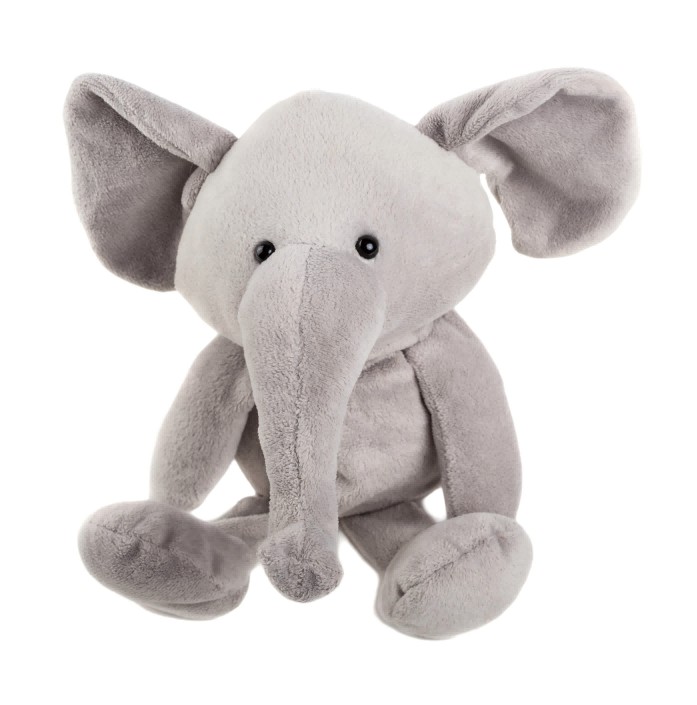
Why Every Pet Parent Needs a High-Quality Dog Training Toy in Their Arsenal
In the world of pet ownership, training your furry friend is an essential part of building a strong bond and ensuring a harmonious household. While treats and praise are often the go-to tools in a pet parent’s arsenal, a high-quality dog training toy can be the secret ingredient to success. Here’s why every pet parent should consider adding one to their collection.
Dogs are natural learners, and their curiosity is insatiable. A well-crafted training toy can tap into this innate desire to explore and understand the world around them. These toys are designed not only to entertain but also to engage their minds, which can lead to more effective and enjoyable training sessions.
One of the key benefits of incorporating a dog training toy is the ability to reinforce positive behaviors. Many toys come with treats or puzzles that encourage your dog to think and work for their rewards. This method of training can be particularly effective for dogs that thrive on mental stimulation, as it keeps them engaged and focused on the task at hand.
Not all dogs are created equal, and each pup has their own unique set of preferences and challenges. A high-quality training toy can be tailored to your dog’s specific needs. Whether your dog is a chewaholic, a fetch fiend, or a puzzle solver, there’s a toy out there that can cater to their interests and help you address any training issues they might have.
For instance, if your dog has a tendency to bark excessively, a toy that can be filled with treats and requires them to perform a task to access the food can help redirect that energy into a more constructive behavior. Similarly, if your dog struggles with separation anxiety, a toy that provides a comforting scent or a soothing sound can be a great tool to keep them occupied and calm when you’re not around.
One of the most significant advantages of using a dog training toy is the convenience it offers. Unlike traditional training methods that may require a lot of time and effort, a well-chosen toy can be used anytime, anywhere. This means you can reinforce good behavior during a short break at work, during a walk, or even when you’re just relaxing at home.
Training toys also provide a safe and controlled environment for your dog to practice new skills. They can help your dog learn to focus on a task without the distractions of the real world. This can be particularly helpful for dogs that are easily distracted or overwhelmed by their surroundings.
Moreover, using a dog training toy can be a great way to prevent boredom and destructive behavior. Dogs that are left alone for long periods without appropriate stimulation may resort to chewing on furniture, digging up the yard, or other unwanted behaviors. A training toy can provide a healthy outlet for their energy and curiosity, reducing the likelihood of these issues.
In addition to the practical benefits, training toys can also enhance the bond between you and your dog. Engaging in training sessions with your pet can be a fun and rewarding experience for both of you. It allows you to spend quality time together, strengthening your relationship and creating lasting memories.
When choosing a dog training toy, it’s important to consider the size, strength, and temperament of your dog. A toy that’s too small or too fragile can be easily destroyed, while one that’s too large may not be challenging enough. High-quality materials and durable construction are key to ensuring that your investment will last.
In conclusion, a high-quality dog training toy is a versatile and valuable tool for any pet parent. It can enhance your dog’s learning, provide mental stimulation, reinforce positive behaviors, and offer a safe and engaging way to spend time together. By incorporating a training toy into your dog’s routine, you’re not just giving them a fun toy; you’re investing in a happier, healthier, and better-trained pet.
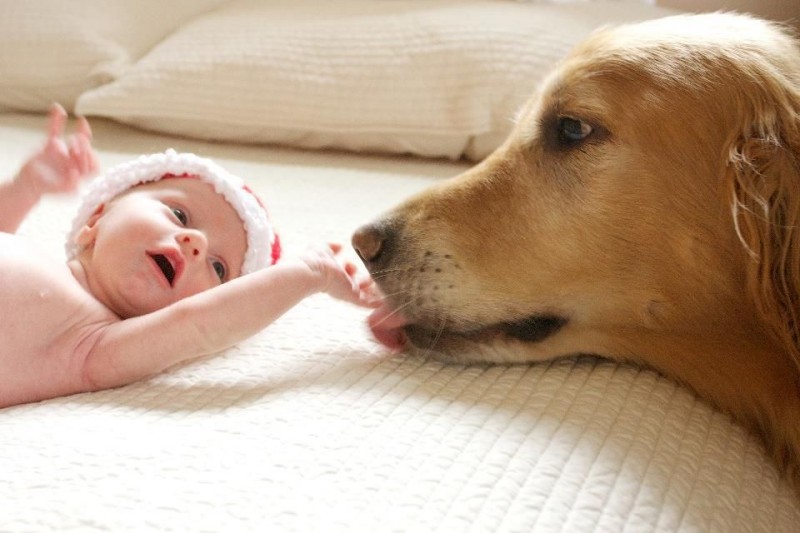
Interactive Features That Make Learning Fun for Your Furry Friend
Dog training can sometimes be a challenging endeavor, but it doesn’t have to be a chore. With the right tools, even the most mundane tasks can become enjoyable experiences for both you and your furry friend. Enter the interactive dog training toy – a game-changer that turns learning into a fun-filled adventure. Here’s a closer look at the features that make these toys not just entertaining, but also highly effective in teaching your dog new tricks and commands.
-
Engaging Sounds and Lights: Many high-quality dog training toys are equipped with various sounds and lights that capture a dog’s attention. The beeps, whistles, and flashing lights can be irresistible, drawing your pup’s focus to the task at hand. This sensory engagement helps keep your dog’s mind active and interested, making it easier to teach new commands or reinforce existing ones.
-
Challenging Puzzles and Obstacles: Interactive toys often come with puzzles and obstacles that require problem-solving skills. These can range from hidden treats that your dog must sniff out to toys that require them to push, pull, or spin to release a reward. This not only stimulates your dog’s brain but also provides a physical workout, helping to maintain their overall health and well-being.
-
Variety of Textures and Scent Options: Dogs have a keen sense of smell, and toys with different textures and scents can be highly appealing. Some toys are scented with natural attractants like chicken or liver, while others have varying textures that encourage your dog to use their paws and mouth in different ways. This tactile stimulation can make the learning process more enjoyable and memorable for your pet.
-
Treat Dispensers and Reward Systems: Many interactive dog training toys are designed with treat dispensers that release small rewards as your dog interacts with them. This reward-based training is a powerful motivator for dogs, as it reinforces positive behavior. By associating the act of playing with the toy with a treat, your dog is more likely to engage with the toy consistently.
-
Adjustable Levels of Difficulty: As your dog becomes more proficient at using the interactive toy, the level of difficulty can often be adjusted. This feature allows the toy to grow with your dog, providing a continuous challenge that keeps them engaged and prevents boredom. Whether it’s increasing the number of steps needed to access a treat or adding new puzzles, these toys can evolve with your dog’s skill level.
-
Durability and Safety: High-quality dog training toys are built to last. They are typically made with sturdy materials that can withstand the occasional rough play or even the occasional chewing session. Safety is also a top priority, with non-toxic paints and materials that ensure your dog can enjoy their toy without any health risks.
-
Versatility: Many interactive dog training toys are versatile, serving multiple purposes. They can be used for both training sessions and regular playtime, providing a multifunctional tool for your pet’s daily routine. This versatility means that you can use the same toy to teach new tricks, reinforce commands, and simply provide a fun activity for your dog.
-
Social Interaction: Some interactive toys are designed to encourage social play, either with your dog or with other dogs. This can be particularly beneficial for dogs that need more socialization or have a tendency to become lonely. Toys that mimic the behavior of other animals or that can be used in group play can help improve your dog’s social skills and reduce any anxiety they might have.
-
Portability: Many interactive dog training toys are designed with portability in mind. This means you can take them along on walks, to the park, or even on trips, ensuring that your dog can enjoy their interactive playtime no matter where you go.
-
Eco-Friendly and Sustainable Materials: As pet owners become more conscious of the environment, there’s a growing demand for toys made from sustainable and eco-friendly materials. Interactive dog training toys that are made from recycled materials or natural, biodegradable substances not only provide a fun learning tool but also align with a more eco-conscious lifestyle.
In conclusion, the interactive features of dog training toys are what set them apart as an essential tool in your pet’s arsenal. They provide a fun, engaging, and rewarding way to teach your dog new tricks and commands, all while promoting mental and physical health. Whether your dog is a puppy or a senior, interactive toys can be a delightful part of their daily routine, making the training process an enjoyable experience for both you and your furry companion.

How a Dog Training Toy Can Transform Your Pet’s Behavior and Bonding Time
Incorporating a dog training toy into your pet’s routine can be a game-changer for both you and your furry friend. These toys are not just for entertainment; they are powerful tools that can revolutionize your pet’s behavior and deepen the bond you share. Here’s how:
1. Cognitive Stimulation Through Puzzle PlayDogs are intelligent creatures, and their minds need stimulation just as much as their bodies. Interactive training toys, such as puzzle feeders or treat-dispensing balls, challenge your dog to use their problem-solving skills. This cognitive workout can help prevent boredom and reduce the likelihood of destructive behaviors. As your dog works to retrieve treats or solve a puzzle, they are also learning patience and perseverance, which can translate into better behavior during everyday tasks.
2. Reinforcing Positive BehaviorsTraining toys are often designed to reward your dog for correct actions. For example, a toy that dispenses treats when your dog licks it or a ball that rolls when thrown can reinforce the concept of following commands. This positive reinforcement not only teaches your dog new tricks but also reinforces existing good behavior, making it more likely to be repeated.
3. Encouraging Exercise and Weight ManagementMany dogs are prone to obesity, and regular exercise is crucial for maintaining a healthy weight. Dog training toys that encourage play and movement can be a fun way to ensure your pet gets the physical activity they need. Toys like tug-of-war ropes or fetch balls can provide a great workout, helping to keep your dog in shape and reducing the risk of health issues associated with excess weight.
4. Strengthening the Human-Animal BondThe time spent playing with your dog using training toys can be incredibly bonding. It’s an opportunity for you to connect with your pet on a deeper level, engaging in activities that require teamwork and trust. Whether you’re teaching your dog to fetch a special toy or guiding them through a new puzzle, the shared experience can create a stronger emotional connection between you both.
5. Reducing Separation AnxietyDogs can become anxious when left alone, leading to behaviors like barking, chewing, or pacing. Interactive training toys can help alleviate these symptoms by providing a source of entertainment and mental engagement. A toy that your dog can play with independently can make separation easier for both of you, as it keeps their mind occupied and provides a sense of comfort.
6. Teaching Self-Control and PatiencePatience is a virtue, and it’s a skill that can be taught through the use of training toys. Many interactive toys require your dog to wait for a treat or to figure out how to get to the toy. This teaches them self-control and patience, which are valuable traits that can be applied to other aspects of their behavior, such as waiting for their food or not jumping on guests.
7. Providing Mental Stimulation for Senior DogsAs dogs age, their physical abilities may decline, but their minds remain sharp. Interactive training toys can provide mental stimulation for senior dogs, helping to keep their minds active and engaged. This can be particularly beneficial for preventing cognitive decline and maintaining a high quality of life.
8. Encouraging SocializationFor dogs that are shy or have socialization issues, training toys can be a great tool. They can be used in group settings to encourage your dog to interact with other dogs in a controlled and positive environment. This can help build confidence and improve social skills over time.
9. Reducing Boredom and Destructive BehaviorsWhen dogs are bored, they often find ways to entertain themselves that may not be to your liking. Interactive training toys can provide a constructive outlet for their energy, reducing the likelihood of destructive behaviors like digging, chewing, or excessive barking.
10. Customizable Difficulty LevelsMany training toys come with adjustable difficulty levels, allowing you to tailor the challenge to your dog’s current skill level. As your dog becomes more proficient, you can increase the difficulty, ensuring that they continue to learn and grow throughout their life.
In conclusion, a dog training toy is more than just a fun accessory; it’s a multifaceted tool that can transform your pet’s behavior and enhance the time you spend together. By providing mental and physical stimulation, reinforcing positive behaviors, and strengthening the bond between you and your furry friend, these toys can make a significant impact on your dog’s life.
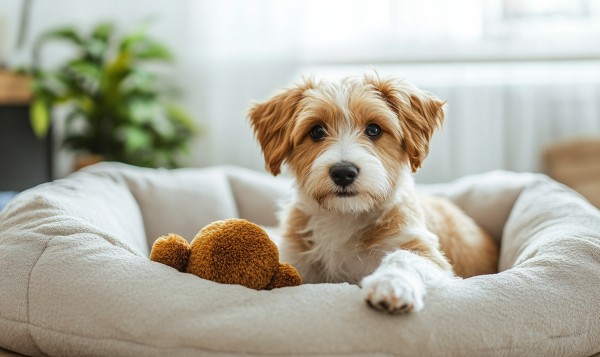
Top Picks for Dog Training Toys That Will Keep Your Pup Engaged and Educated
Incorporating a dog training toy into your pet’s routine can be a game-changer for both your pup’s behavior and the time you spend together. These innovative toys are designed not only to provide entertainment but also to aid in teaching and reinforcing positive behaviors. Here are some top picks that will keep your furry friend engaged and educated:
1. Puzzle Toys for Mental StimulationPuzzle toys are excellent for challenging your dog’s brain and keeping them occupied. They come in various shapes and sizes, from simple to complex. These toys often require your dog to problem-solve, push, pull, or lift to reveal treats or toys. This mental engagement can significantly reduce destructive behaviors and provide a satisfying outlet for your dog’s natural instincts.
2. Treat Dispensing ToysDogs love treats, and treat dispensing toys are a fantastic way to combine rewards with training. These toys release treats when your dog interacts with them, such as rolling them, shaking them, or pushing buttons. This encourages your pup to engage with the toy, which can help with patience and self-control. Plus, it’s a great way to reinforce commands like “wait” or “stay” while your dog is focused on the toy.
3. Tug Toys for Physical ActivityTug of war isn’t just for humans; it’s also a great way for dogs to get the physical exercise they need. Tug toys come in a variety of materials, from sturdy ropes to plush animals. These toys provide a fun and safe way to build muscle, maintain healthy teeth, and satisfy your dog’s natural prey drive. It’s also a bonding experience that can strengthen the relationship between you and your pet.
4. Noisy Toys for Sensory StimulationDogs are sensitive to sound, and noisy toys can be a powerful tool for training. These toys often feature crinkly sounds, whistles, or other auditory cues that can capture your dog’s attention and keep them engaged. Noisy toys are particularly useful for training commands like “come” or “heel,” as they can override distractions and keep your dog focused on you.
5. Snuffle Mats for Natural ForagingSnuffle mats mimic the natural foraging behavior of dogs in the wild. They are filled with treats or toys and require your dog to use their sense of smell to uncover them. This activity not only stimulates their brain but also gives them a sense of accomplishment. Snuffle mats are great for dogs of all ages and can be a calming activity for senior pets or those who need a bit of extra relaxation.
6. Interactive Laser Toys for Play and FocusLaser toys are a hit with most dogs, offering a fun way to engage in a game of “catch the laser.” These toys can be used to encourage your dog to focus on a specific task, like sitting or staying, as they work to track the laser beam. Interactive laser toys are excellent for mental stimulation and can help with behavior issues such as hyperactivity or anxiety.
7. Chew Toys for Teething and Oral HealthChewing is a natural behavior for dogs, and providing them with appropriate chew toys can help maintain healthy teeth and jaws. These toys are usually made from durable materials that are safe for your dog to gnaw on, reducing the risk of swallowing small pieces. Chewing also helps relieve stress and can be a calming activity for dogs who tend to bark or chew on things when they’re anxious.
8. Agility Course Toys for Endurance and CoordinationAgility toys, such as weave poles or tunnels, can be used to create a small agility course in your home. These activities help improve your dog’s coordination, balance, and endurance. They also provide a fun and challenging workout that can be tailored to your dog’s fitness level. Agility toys can be a great addition to your training routine and can be used to reinforce commands and cues.
By introducing these dog training toys into your pet’s life, you’re not only providing entertainment but also fostering a deeper bond with your furry friend. These toys encourage positive behavior, mental and physical health, and can be a vital part of your dog’s overall development. Remember, the key is to introduce new toys gradually and observe how your dog interacts with them, ensuring they are safe and suitable for your pet’s specific needs.
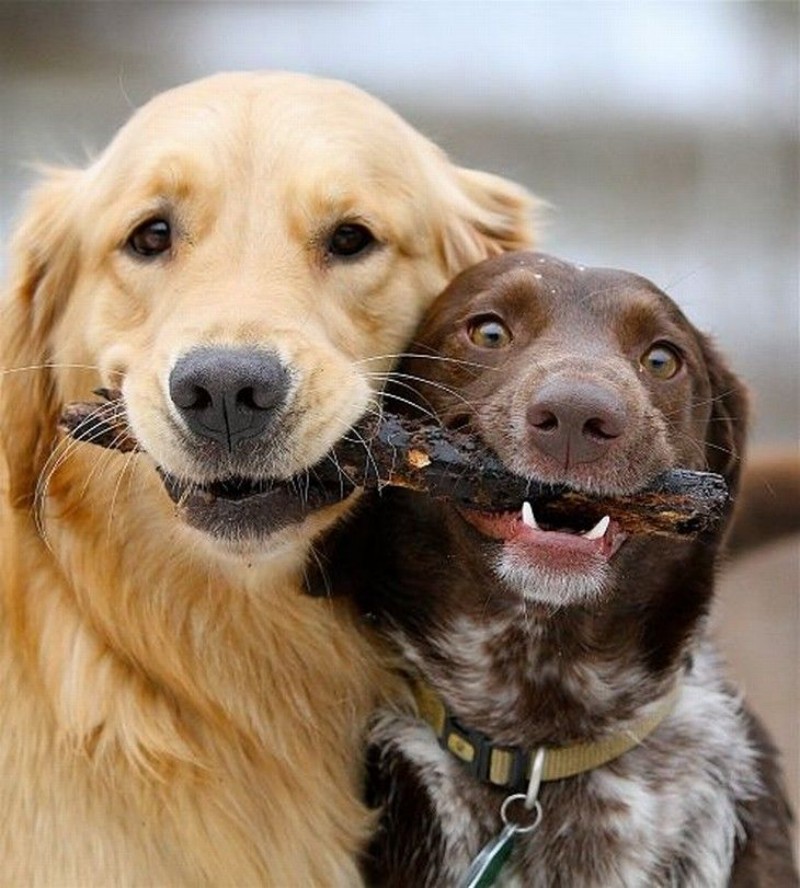
Tips for Choosing the Right Dog Training Toy for Your Pup’s Size and Breed
When selecting a dog training toy, it’s crucial to consider your pup’s size and breed to ensure the toy is both safe and effective. Here are some tips to guide you in making the perfect choice:
Dogs come in all shapes and sizes, from the tiny Chihuahua to the towering Great Dane. The size of the toy should be proportional to your dog’s mouth. A toy that’s too large can be a choking hazard, while one that’s too small might be easily destroyed or lost. For smaller breeds, opt for toys with narrow openings and soft, pliable materials. Larger dogs can handle sturdier toys with thicker ropes or tougher textures.
Breed characteristics can also influence your choice of training toys. For instance, breeds known for their herding instincts, like Border Collies, may enjoy toys that mimic chasing or retrieving. On the other hand, breeds with strong hunting drives, like Labrador Retrievers, might be more intrigued by toys that resemble a game of hide and seek.
Consider the chewing habits of your dog. Some breeds are notorious for their strong jaws and aggressive chewing. Toys designed for power chewers, such as those made from KONG rubber or durable nylon, can withstand the rigors of a relentless jaw. For less aggressive chewers, you might find that softer toys or those with treats inside are more suitable.
The intelligence level of your dog should also play a role in toy selection. Puppies and dogs with a high level of intelligence often require toys that challenge their minds. Puzzle toys, treat-dispensing toys, and interactive games can help stimulate your pup’s cognitive abilities while teaching them new commands.
Durability is a key factor when choosing a dog training toy. The toy should be able to withstand the wear and tear of daily use. For dogs that are particularly rough on their toys, consider brands known for their robust construction. Look for toys with reinforced stitching, sturdy materials, and, if necessary, a warranty against chewing damage.
Not all dogs are the same when it comes to their preferences. Some may be attracted to the sound of crinkly materials, while others might be more interested in the feel of a toy. Take note of your dog’s preferences during playtime to guide your toy choice. For example, if your dog loves to carry around objects, a plush toy with a sturdy handle might be ideal. Conversely, if your dog is more of a rumbler, a toy with bells or squeakers could be more appealing.
Age is another factor to consider. Puppies are more likely to chew through toys faster than adult dogs. Choose toys that are safe for your puppy’s teething stage, such as those made from natural rubber or soft fabric. As your dog matures, you can gradually introduce more durable toys that will last through their chewing phase.
Some dogs have a tendency to swallow pieces of toys, so it’s important to regularly inspect the toy for any signs of wear. Toys with removable parts or those that can be easily disassembled are better suited for dogs that might attempt to eat parts of the toy. Always supervise your dog during play, especially with new toys, to ensure there’s no risk of ingestion.
Breed-specific toys can be a fun way to engage your dog while also addressing their particular traits. For example, a toy shaped like a squirrel or bird could be perfect for a hound breed, as it triggers their natural hunting instincts. Similarly, a toy that looks like a ball could be great for a retriever, satisfying their retrieval drive.
When it comes to the size of your dog, it’s not just about their height or weight. Some breeds have long, narrow bodies that might not be as strong as they look. In these cases, a toy that’s too heavy could be difficult for your dog to carry, potentially leading to strain or injury. Conversely, a toy that’s too light might not hold their interest.
The type of training you’re doing can also influence your choice of toy. If you’re working on commands related to fetch, a toy that’s easy to throw and retrieve is a must. For obedience training, a toy that can be used as a reward can help reinforce positive behavior.
Remember that dogs have individual personalities, and what works for one may not work for another. Pay attention to your dog’s reactions to different types of toys and be willing to experiment to find what they love best. A good dog training toy not only aids in learning but also strengthens the bond between you and your furry friend.
In conclusion, the right dog training toy can make a significant difference in your pet’s behavior and bonding time. By considering your dog’s size, breed, chewing habits, intelligence, age, and personality, you can choose a toy that not only keeps your pup engaged and educated but also safe and enjoyable. With the right toy, training can become a fun and rewarding experience for both you and your four-legged companion.

Real-Life Success Stories:见证Dog Training Toys的神奇效果
In the world of dog training, there are countless tools and methods that promise to shape your furry friend into the perfect companion. However, none quite capture the magic and effectiveness of a well-chosen dog training toy. Let’s delve into some real-life success stories that showcase the incredible impact these toys can have on both behavior and the bond between pets and their owners.
Story 1: The Chaser’s TransformationOnce upon a time, there was a Golden Retriever named Max who was a bit of a ball hog. He would chase after every ball thrown, but he would never retrieve it back. His owner, Sarah, was at her wit’s end. That’s when she discovered the Chaser Ball, a toy that promised to keep Max engaged and challenged. Within days, Max was not only retrieving the ball with ease but also enjoying the mental stimulation that came with the game. Sarah was thrilled to see Max’s behavior transform, and their bond grew stronger as they played together.
Story 2: The Puzzle Pup’s ProgressLuna, a Border Collie, was a highly intelligent dog with a knack for getting into trouble. Her owner, Mark, tried various training methods, but Luna’s problem-solving skills often led her to ignore the rules. One day, he stumbled upon a puzzle toy designed for dogs. It required Luna to figure out how to get treats out of various compartments. Initially, Luna was confused, but soon she was completely absorbed in the challenge. Not only did Luna learn to follow the rules, but she also became more focused and less destructive. Mark’s relationship with Luna deepened as they worked together to solve the puzzles.
Story 3: The Squirrel’s New HobbyBuddy, a Jack Russell Terrier, was always on the move. He would bark at every squirrel he saw, and his energy was almost impossible to contain. His owner, Emily, was looking for a way to channel Buddy’s excitement into something more constructive. She decided to introduce a toy that simulated the movement of a squirrel. To her delight, Buddy was instantly captivated. He spent hours chasing the toy, and his barking decreased significantly. Emily found that Buddy’s new hobby not only helped with his behavior but also gave her a chance to bond with him during playtime.
Story 4: The Dog Who Learned PatienceCharlie, a Beagle, was known for his impatience. He would pull on the leash, jump up on people, and often ignored commands. His owner, Tom, was determined to teach Charlie patience and control. He invested in a dog training toy that rewarded Charlie with treats for calm and controlled behavior. Slowly but surely, Charlie began to understand that staying calm and waiting for his turn was the key to earning rewards. The toy became a tool for positive reinforcement, and Charlie’s behavior improved dramatically. Tom and Charlie’s walks became more enjoyable, and their bond grew as Charlie learned to be a well-behaved member of the family.
Story 5: The Pup Who Learned to ShareMilo, a Shih Tzu, was a bit of a lone wolf. He preferred to play alone and would often ignore his sister, Bella. Their owner, Lisa, wanted to encourage more interaction between the two. She introduced a training toy that required teamwork to get treats. At first, Milo was hesitant to share, but Bella’s enthusiasm was contagious. Over time, Milo learned that working together was more rewarding than playing alone. The toy became a catalyst for sibling bonding, and Milo and Bella’s relationship flourished.
These stories are just a few examples of how dog training toys can have a profound impact on a dog’s behavior and the relationship between a pet and their owner. From mental stimulation to physical exercise, these toys offer a versatile and fun way to teach and reinforce good behavior. Whether your dog is a ball hog, a problem solver, an energetic bundle of joy, or a bit of a troublemaker, there’s a dog training toy out there that can help transform their behavior and strengthen your bond.
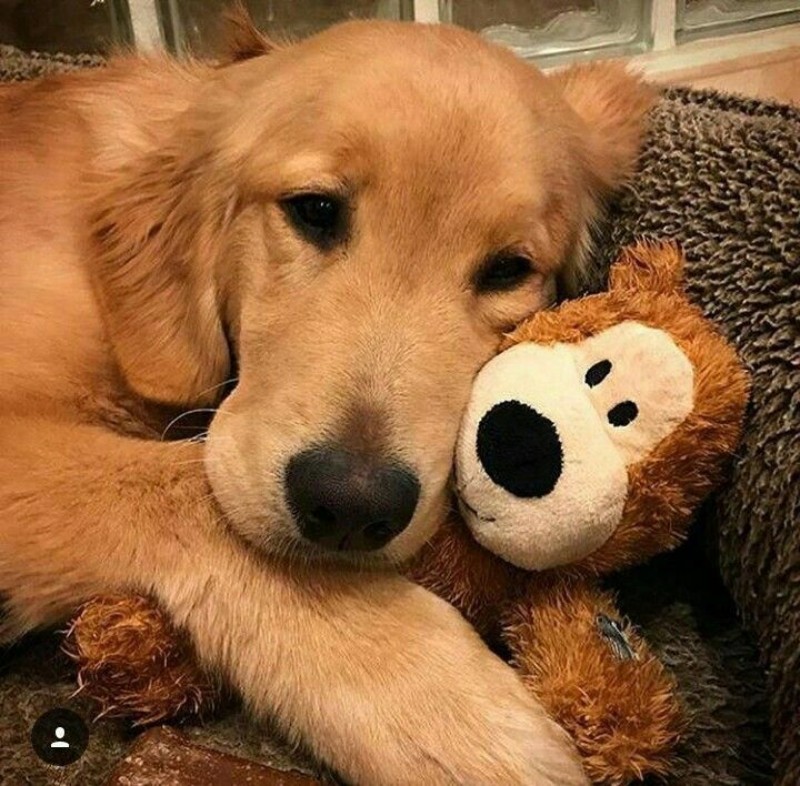
The Benefits of Using a Dog Training Toy Over Traditional Methods
Incorporating a dog training toy into your pup’s routine can offer a plethora of benefits that traditional training methods might miss. Here’s a closer look at why these playful tools can be a game-changer for both you and your furry friend.
Dogs are naturally curious creatures, and their love for play is a fundamental aspect of their nature. A dog training toy taps into this innate curiosity, making the learning process not just educational but also enjoyable. Unlike the monotony of repetitive commands, a training toy can keep your dog’s mind active and engaged, which is crucial for reinforcing good behavior and teaching new tricks.
One of the key advantages of using a dog training toy is the element of interactive engagement it brings to the table. These toys are often designed to stimulate problem-solving skills, which can be incredibly beneficial for dogs of all ages and breeds. By encouraging your dog to figure out how to use the toy, you’re fostering cognitive development, which can lead to a more well-rounded and intelligent pet.
For many dogs, traditional training methods can become repetitive and even monotonous. This can lead to a lack of motivation, and in some cases, a decrease in the dog’s interest in training sessions. Dog training toys, on the other hand, offer a variety of textures, shapes, and sounds that can keep your pup’s attention, making each training session a fresh and exciting experience.
Not all dogs are created equal, and what works for one may not work for another. A dog training toy can be tailored to your pup’s specific needs, whether it’s a puzzle toy for mental stimulation, a treat-dispensing toy for reward-based training, or a tug-of-war toy for physical exercise. This customization ensures that the training experience is both effective and enjoyable for your dog.
One of the most significant benefits of using a dog training toy is the emotional connection it can foster between you and your pet. As you engage with your dog during play and training, you’re building a stronger bond. This bond is not just about love and companionship; it’s about trust and understanding. A dog that feels secure and connected to its owner is more likely to respond positively to training.
Another advantage of dog training toys is their versatility. They can be used both indoors and outdoors, making them perfect for families with active lifestyles. Whether you’re at home or on a walk, you can use these toys to reinforce commands, teach new tricks, or simply provide a fun activity to keep your dog entertained.
Many dog training toys are also designed with safety in mind. They are made from non-toxic materials, have no small parts that could be a choking hazard, and are built to withstand the occasional rough play. This peace of mind allows you to focus on training without worrying about your dog’s safety.
In the realm of dog training, consistency is key. However, it’s not always easy to maintain the same level of enthusiasm and engagement every day. Dog training toys can help bridge the gap by offering a variety of activities that keep the training process fresh and dynamic. This consistency can lead to more rapid and effective learning for your dog.
For dogs with specific behavioral issues, such as anxiety or aggression, a dog training toy can be a valuable tool. Many toys are designed to help calm dogs, distract them from negative triggers, or provide a focus point for their energy. This can be particularly helpful during stressful situations or when introducing your dog to new environments.
In addition to the immediate benefits of using a dog training toy, there are long-term advantages as well. Dogs that are regularly engaged in mental and physical activities through training toys are often healthier and happier. They are less likely to develop obesity, boredom-related behaviors, or destructive tendencies. This can lead to a better quality of life for your pet and fewer challenges for you as a pet parent.
Lastly, dog training toys can be a cost-effective alternative to hiring a professional dog trainer. While professional training can be invaluable, it can also be expensive. With the right training toys, you can provide your dog with a high-quality training experience at a fraction of the cost. Plus, you get to spend quality time with your pet while doing so.
In conclusion, the benefits of using a dog training toy over traditional methods are numerous. From enhancing your dog’s cognitive development to strengthening the bond between you, these toys offer a fun and effective way to train your pet. Whether you’re working on basic obedience or teaching complex tricks, a dog training toy can be a valuable addition to your training arsenal.
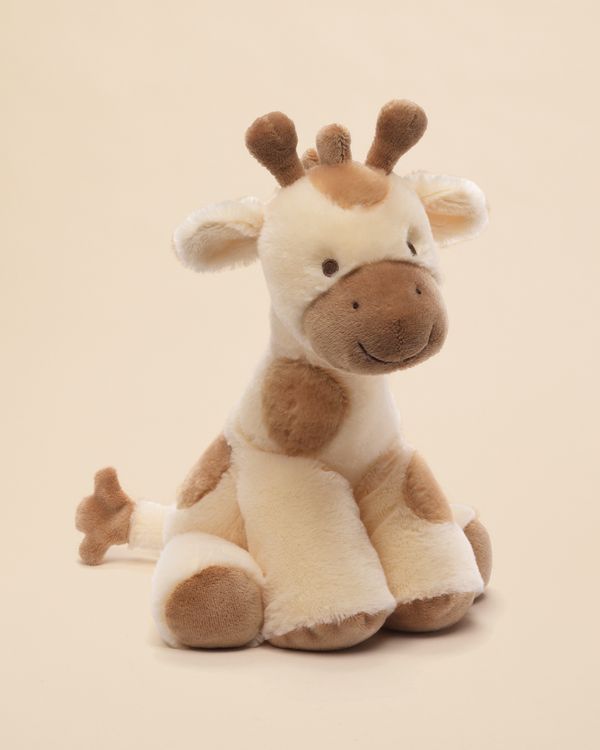
Where to Buy: Your Guide to Finding the Best Dog Training Toys Online
Navigating the online marketplace for dog training toys can be overwhelming, but with a bit of guidance, you can find the perfect tools to enhance your pup’s learning experience. Here’s a guide to help you sift through the options and make an informed decision:
Consider the Type of Toy That Matches Your Dog’s PreferencesDogs are as unique as their owners, and their toy preferences can vary widely. Think about whether your dog is more of a chewer, a tug-of-war enthusiast, or a puzzle solver. For chewers, durable rubber or nylon toys are ideal. Tug toys are great for dogs that love to play and bond through physical activity. Puzzle toys, on the other hand, stimulate your dog’s mind and can be a fantastic way to provide mental stimulation.
Look for Toys with Treat Pockets or Hidden CompartmentsThese types of toys can be incredibly effective for training. They encourage your dog to engage with the toy, as they work to uncover treats or snacks. This not only keeps them entertained but also reinforces good behavior. Toys like treat-dispensing balls or puzzle feeders can be a game-changer for dogs that need a little extra motivation during training sessions.
Check for Safety FeaturesWhen shopping online, always prioritize safety. Look for toys that are free of small parts that could be a choking hazard, and ensure that the materials used are non-toxic and durable. Toys that are designed to withstand rigorous play are less likely to cause harm to your pet.
Consider Your Dog’s Size and StrengthA toy that’s too small for your dog can be easily destroyed, while one that’s too large might not be engaging enough. Larger dogs might enjoy tougher materials and heavier toys, while smaller dogs may prefer something more lightweight and easier to carry. Pay attention to the weight and size of the toy to ensure it’s appropriate for your pup’s strength and play style.
Read Reviews and Look for RecommendationsOnline reviews can be a goldmine of information. Other pet owners’ experiences can give you insights into how a particular toy holds up over time and whether it’s worth the investment. Look for patterns in the reviews, such as durability, ease of cleaning, and whether the toy meets the needs of dogs with specific behaviors or preferences.
Check for Return Policies and WarrantiesWhen buying online, it’s important to have a reliable return policy in case the toy doesn’t meet your expectations or your dog’s needs. Look for companies that offer a money-back guarantee or a replacement if the toy is damaged within a certain period. A warranty can provide peace of mind, knowing that you’re protected if the toy fails to meet quality standards.
Explore Different Brands and StylesThere are countless brands and styles of dog training toys out there, each with its own unique features. From classic rope toys to high-tech interactive gadgets, the variety can be exciting. Take the time to explore different brands and styles to find the one that resonates with both you and your dog.
Keep an Eye Out for Sales and DiscountsPrices can vary widely, and many online retailers offer sales and discounts, especially around holidays or during specific promotional events. Signing up for newsletters or following brands on social media can alert you to these opportunities, allowing you to get great deals on high-quality training toys.
Remember to Personalize the ExperienceUltimately, the best dog training toy is one that your dog loves and responds well to. Personalize the experience by introducing new toys gradually and observing how your dog interacts with them. Some dogs may take to a new toy immediately, while others might need a bit of encouragement or time to adjust.
Stay Informed About New ProductsThe world of dog training toys is always evolving, with new and innovative products hitting the market regularly. Stay informed about the latest trends and technologies in dog training toys to ensure that you’re providing your pup with the best possible tools for learning and play.
By following these guidelines, you’ll be well on your way to finding the best dog training toys online that will keep your pup engaged and educated, making the training process both fun and effective.
